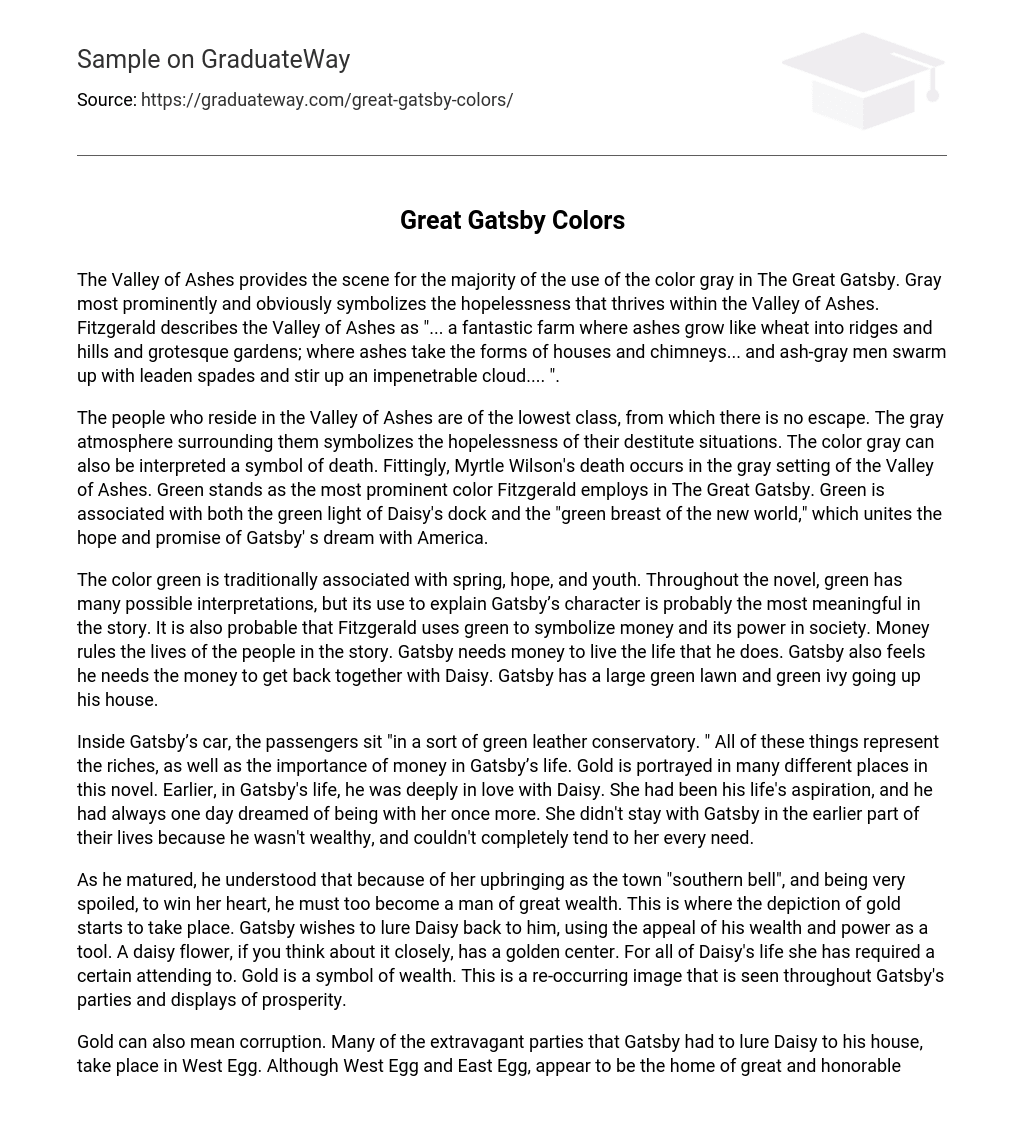In The Great Gatsby, the Valley of Ashes prominently displays the color gray, symbolizing despair in this desolate location. Fitzgerald describes it as a peculiar farm where ashes grow like wheat, shaping ridges, hills, and strange gardens. The ash-gray men tirelessly swarm with heavy shovels, forming an impenetrable cloud.
The Valley of Ashes is inhabited by the lowest class of people, who are trapped in their destitute situations with no way out. The gray atmosphere surrounding them represents the hopelessness of their lives and can also be seen as a symbol of death. This is evident as Myrtle Wilson meets her demise in this bleak gray setting. In The Great Gatsby, green is the most prominent color used by Fitzgerald. It is associated with the green light at Daisy’s dock and the “green breast of the new world,” which links Gatsby’s dream with the hope and promise of America.
Traditionally, the color green is associated with spring, hope, and youth. In the novel, green holds various interpretations, but its significance lies in its portrayal of Gatsby’s character. Moreover, Fitzgerald employs green to symbolize the influence and authority of money in society, as it reigns over the lives of the story’s characters. Gatsby’s pursuit of money is necessary for him to maintain his desired lifestyle and potentially reunite with Daisy. In his residence, Gatsby boasts a sprawling green lawn adorned by climbing green ivy.
Inside Gatsby’s car, the passengers are seated “in a kind of green leather conservatory.” These specific elements represent Gatsby’s affluence and the importance of money in his existence. The book often depicts the presence of gold in different scenarios. In Gatsby’s history, his affection for Daisy was deep-rooted. She had been his ultimate aspiration in life, and he always imagined being reunited with her one day. However, during their youth, Daisy decided not to remain with Gatsby because he lacked riches and couldn’t adequately fulfill her desires.
As he grew older, he realized that in order to win her affection, he needed to match her privileged upbringing and material desires. Thus, Gatsby decides to use his wealth and influence to entice Daisy back into his life. It is interesting to note that the center of a daisy flower is golden, mirroring the allure of wealth that has always captivated Daisy. Throughout Gatsby’s lavish parties and demonstrations of prosperity, the symbol of gold consistently appears.
Gold can symbolize corruption, as seen in the extravagant parties Gatsby throws in order to entice Daisy to his home in West Egg. Despite the outward appearance of greatness and honor in both West Egg and East Egg, these locations are actually breeding grounds for corruption. East and West Egg are like eggs, appearing pure and white on the outside but revealing a golden interior. This metaphor applies to all residents of the Eggs, but it particularly resonates with Gatsby and Daisy. Daisy is often depicted wearing all white, yet her true nature is inherently selfish and corrupt.





